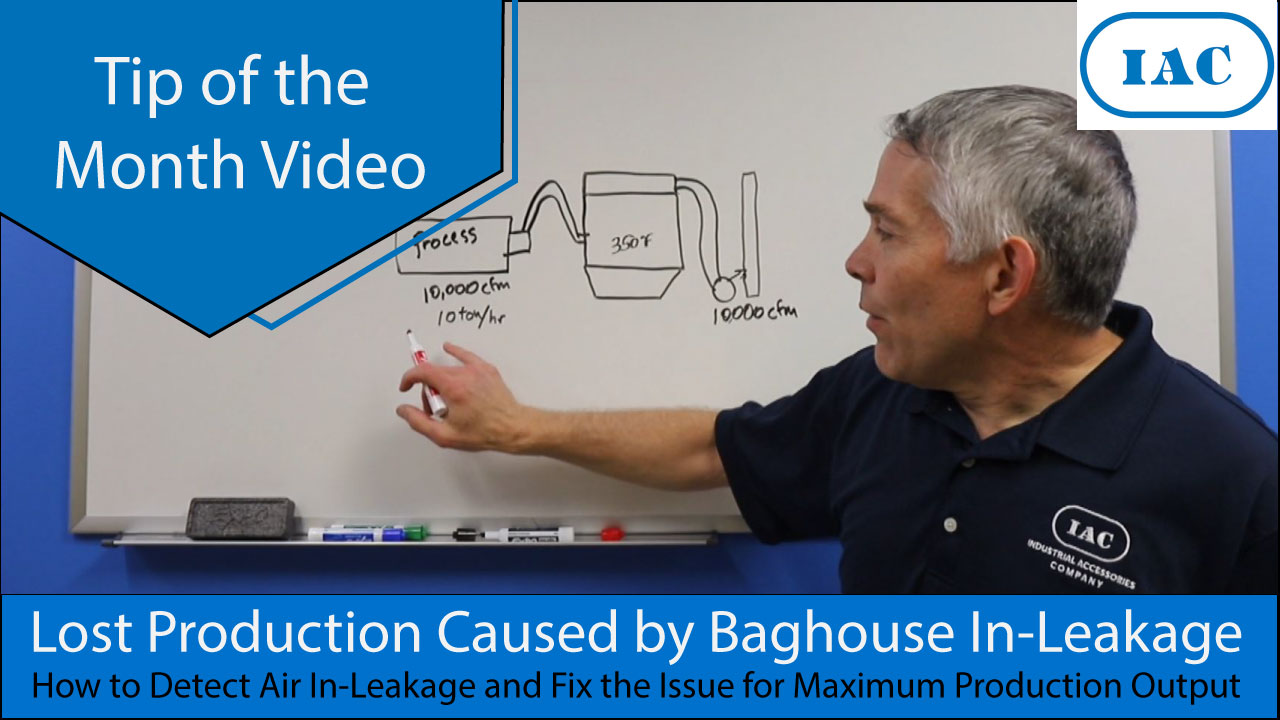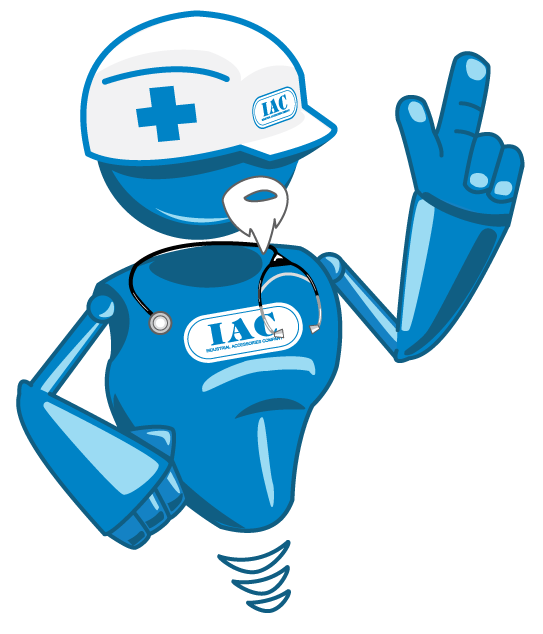Baghouse Maintenance Tips: Prevent Lost Production Caused By In-Leakage

Do you hear a hissing sound coming from your baghouse’s housing, a discharge point, or expansion joint? That’s the sound of lost production, and lost profits. IAC Process Engineer Luis Castano has inspected hundreds of baghouse dust collection and vent systems; lost production capacity due to In-leakage is the problem he finds most often. In-leakage reduces the baghouse system’s ability to process airflow at rated CFM capacity, which in turn causes the process equipment’s production to drop. High temperature air magnifies this effect, slowing production system down even more.
In this month's Baghouse Maintenance Tip-of-the-Month Video, Luis Castano explains how to detect In-leakage, and what actions you should take to keep your industrial process equipment operating at maximum production.
What is in-leakage? Well, leakage can be defined as, “an occurrence in which something (such as a liquid or a gas) passes through a hole in a surface”. Adding "in" at the front gives the additional meaning of, “the quantity that leaks in”. We use the term in-leakage to describe outside air (and the moisture or particulate debris it may carry) that leaks into what should be a sealed ventilation for filtration of dust or hazardous air pollutants.
Video transcript: Hi, my name is Luis Castano with IAC’s Tip of the Month video. We see a lot of process ventilation systems, and I can tell you that the main problem we see in the field is baghouse ventilation system in-leakage.
I want to be straight forward and say that when you have a process system, this tip isn’t just a recommendation, it’s an obligation. Let’s say your process requires making 10 tons per hour of whatever your product is, and it requires 10,000 CFM, so therefore, you have a vent system that can handle 10,000 CFM. Assuming this is all designed properly, 10,000 CFM is what you get.
But over time, your process output goes down to 9 tons per hour, which sometimes doesn’t ring any alarms, but yet you’re seeing lost production. One key area we see that has a very common problem is in-leakage.
In-leakage at an expansion joint somewhere, in-leakage at a discharge somewhere, in-leakage at an access door, or in-leakage at a crack in the housing.
It may not appear to be a big deal, but when you hear a hissing sound, your baghouse housing (or the ductwork leading to your baghouse) it is telling you that there is an in-leakage problem.
To illustrate, let’s say that in-leakage at an access door is releasing 500 CFM. This drops your production ventilation system’s capacity down to 9,500 CFM, which is a good reason for your production system to go down and is very costly when you add up every hour of every day.
Maybe you say well, my hissing sound dosen’t add up to that much, so we’ll lower the estimated in-leakage down to 200 CFM. Keep in mind when you have high temperature, when outside air comes at 90°F degrees and hits the inside at 350°F, that volume of air grows. What may be a lot less, once it goes into the system, it expands, and it can really affect your process, and your production, and your income.
Keep an eye on your vent system and keep it sealed up so that it can perform for maximum production. If you want to discuss this in more detail with one of our engineers, please give us a call. Thank you!



